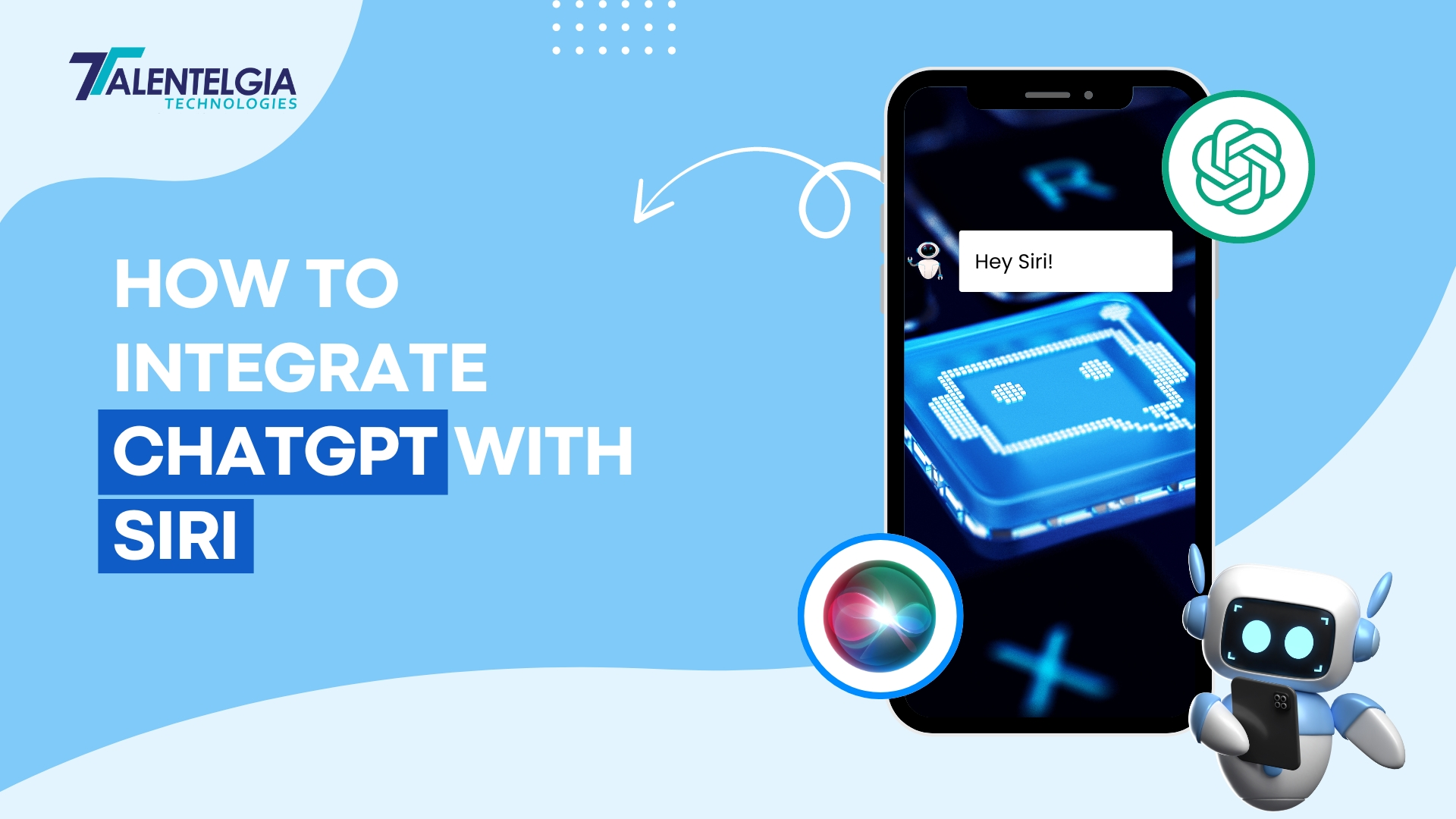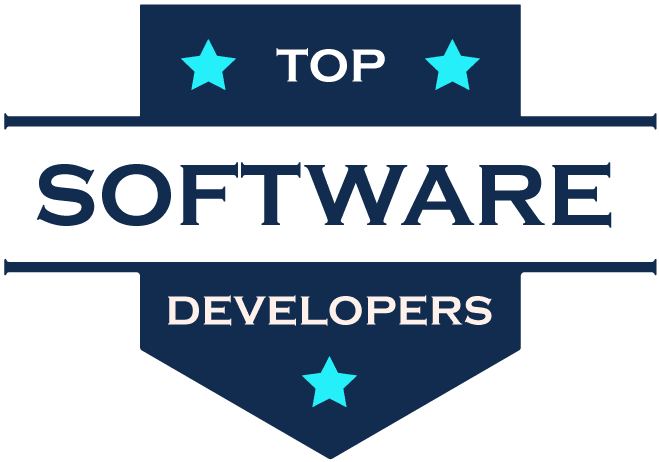World-class enterprises and large organizations are now introduced with outstanding opportunities due to the rapid advancements in the field of Artificial Intelligence (AI), particularly with the emergence of “Generative AI” or simply “Gen AI”, and proprietary “Large Language Models”. LLMs have numerous applications in different industries, including eCommerce, retail, and healthcare, and many more. They can be considered the cornerstone of an enterprise AI strategy since they help companies analyze unstructured data, automate tasks that require significant expertise, and innovate customer experience.
To successfully implement such technologies across your business systems, explore our AI Integration Services designed to align AI capabilities with your existing infrastructure seamlessly.
However, it’s not the model that sets one enterprise apart from another; it is the architecture built around the model. An enterprise LLM architecture will ensure that an AI initiative is an effective growth engine rather than a costly gamble. In this post, we will look into the essentials of enterprise-level LLMs, including their core components, deployment models, and development of bespoke AI technologies.
Understanding the Basics of LLM Technology: Key Components, Benefits & Working
According to a report released by Fortune Business Insights, the global software AI market was valued at $233.46 billion in 2024, which is estimated to reach $1,771.62 billion by the end of 2032 with a CAGR of 29.20% during the forecast period (2025 – 2032). These statistics show that Large Language Models (LLMs) have evolved from being simple experimental chatbots to being an integral part of critical workflows in companies. They streamline various business operations like automating the search of internal knowledge, report generation, customer support, and compliance maintenance.
However, using LLMs in any business environment is not just a matter of using an API. It requires the right procedure, analysis, tailored infrastructure, and privacy protection. So let’s get deeper into this blog and understand the basics of this new LLM technology, explore its various development models, and analyze its benefits and applications.
What are Large Language Models (LLMs)?
Large Language Models (LLMs) are sophisticated AI models that have been trained over massive amounts of data to understand, generate, summarize, and mimic human-like language or behavior. Based on the transformer structure, LLMs learn to recognize how words in a sentence or paragraph relate to one another over long ranges of text, and this prepares them for complex tasks such as writing complex long-form content, answering queries, translating language, and producing original content.
LLMs are the backbone of popular AI applications like ChatGPT, DeepSeeks, Google Gemini, etc., which provide transformational capabilities across customer support, content generation, research, and more. Their ability to understand and predict human context with utmost accuracy will define the future of the human-computer relationship.
Read More :- How To Train LLM?
Key Components of Large Language Models
Large Language Models are primarily built on the transformer architecture, which has revolutionized Natural Language Processing (NLP). The components responsible for their incredible capabilities are:
- Input Text: This is the raw text data that the model processes. It comprises words, sentences, and paragraphs that the model interprets and responds to
- Tokenizer: The tokenizer breaks the input text into smaller units called tokens—these can be whole words, subwords, or even characters. Tokenization converts complex text into manageable pieces that the model can understand.
- Embedding: Each token is then transformed into a high-dimensional numerical vector through embeddings. These vectors capture semantic meaning and contextual relationships between words rather than just their literal appearance.
How Does LLM Work?
To understand the true potential of LLMs, you have to get under the hood to know how the inner systems work. Most LLMs use something called “transformer” architecture, a game-changer in the world of “Deep Learning” that was introduced in 2017. Where the older versions processed language word-by-word, transformers can consider whole sentences and paragraphs at the same time.

- Encoder: The encoder ingests the embedded tokens and generates a contextual representation for each token by understanding its meaning in relation to others in the sequence.
- Attention to mechanism: Attention Mechanism: At the heart of the transformer architecture, attention allows the model to focus on the most relevant parts of the text. It dynamically weighs different tokens based on their importance to generate meaningful context.
- Decoder: The decoder uses the information from the encoder and attention to predict or generate the next token, assembling coherent sentences word by word in response
- Output Text: Finally, the tokens generated by the decoder are converted back into human-readable text, completing the model’s response or task output.
What are The Types of LLMs In the Market?
Large Language Models (LLMs) are advanced AI models trained on extensive collections of text to understand and generate human-like language. They work by learning patterns and structures in language during a rigorous pre-training phase on massive datasets. This enables LLMs to accurately predict words, phrases, or entire sentences in a wide array of contexts.

LLMs come in several types that differ based on their design, openness, and customization options. Understanding these types helps enterprises select the right model for their specific needs.
Pre-Trained Foundational Models
The first phase includes collecting books, articles, websites, and other textual data. These LLMs are first created with billions of words drawn from a variety of textual sources. There is no supervision required in this initial phase. They learn the language complexities such as grammar, dialects, patterns, and contextual meaning. The resulting model is highly versatile and can undertake various tasks or a language.
Few examples include, OpenAI’s ChatGPT, Google Gemini, and Meta’s LlaMA are few popular examples. Companies use to incorporate these applications into various applications due to their solid benchmarks and versatility
Custom Models
Custom models are developed by training existing LLMs on domain-specific data, typically from a specific industry (e.g., healthcare, finance, or legal). This specialization helps make the model more knowledgeable of jargon, context, and nuanced language specific to that domain. “Fine-tuning further increases the accuracy and efficiency of LLMs in enterprise use cases, whereby responses are customized to adhere to business objectives and compliance requirements alike.
Open Source LLMs
Open source LLMs are models whose architecture, training data, and weights are released to the public. Organizations can make changes, retrain, and deploy models without licensing constraints, offering flexibility and ownership. Open source models such as LLaMA, Falcon, or GPT-J have become popular for stimulating innovation, open-source collaboration, and affordable AI. The exchange is that these may be a little more reliant on in-house expertise to roll them out securely and at scale.
Proprietary Models
Proprietary Models, or “Commercial LLMS”, are developed and maintained by for-profit organizations, which deliver them as a service under SLA (e.g., Software-as-a-Service, SaaS) or through API agreements. They also include features or capabilities baked into it , which are pre-optimized infrastructures, securing defense lines, industry compliance certification, and enterprise support. Popular contenders are OpenAI’s GPT, Anthropic’s Claude, and Google’s PaLM. Private LLMs can give you reliability and ease of integration with frequent updates, but they offer little customization abilities and can be expensive.
| Aspect | Pre-trained Foundational Models | Custom Models | Open Source LLMs | Proprietary Models |
| Purpose | Broad general language understanding | Domain-specific customization | Flexible, modifiable solutions | Fully managed and optimized |
| Training Data | Large, diverse, general corpus | Specialized datasets | Varies, community-driven | Controlled, proprietary datasets |
| Accessibility | Available via APIs or model downloads | Built on foundational models | Fully accessible code and weights | Restricted; commercial licensing |
| Cost | Moderate to high based on usage | Potentially high | Often free or low-cost | Substantially higher, subscription-based |
| Control & Customization | Limited customization, targeted fine-tuning | Full customization post base | Full control, open modification | Limited customization |
| Support & Maintenance | Vendor-provided support | Internal or vendor-backed | Community or self-supported | Vendor-managed 24/7 support |
| Security & Compliance | Vendor-managed, varying guarantees | Client-controlled | Depends on deployment | High standards, enterprise ready |
| Examples | GPT-4, LLaMA, PaLM | Fine-tuned GPT for law, medicine | LLaMA, Falcon, GPT-J | OpenAI GPT, Anthropic, Claude |
All Enterprise LLM Deployment Models
A company’s decision on deploying its enterprise LLM model goes beyond simply a technical decision. It reflects a combination of strategic objectives, such as regulatory compliance, budget, and the ability to scale rapidly. Various businesses working in various industries use different development approaches as per their needs, and each model presents its own advantages and disadvantages:
- On-Premises Deployment
This model installs and runs LLMs within an organization’s own data centers. It offers maximum control over hardware, data security, and compliance, making it ideal for industries with strict regulatory demands like healthcare and finance. On-premises deployment enables customization to business processes and minimizes data exposure to external parties.
Examples include companies running private AI clusters or dedicated servers for sensitive workloads.
Key Features:
- Total data and infrastructure control
- High security and compliance adherence
- Customizable model training and inference
- Potentially higher upfront costs and maintenance needs
- Cloud-Based Deployment
In cloud deployment, LLMs are hosted on third-party cloud platforms like AWS, Azure, or Google Cloud, offering scalability and quick startup without heavy initial investments. This model is well-suited for rapid experimentation, diversified workloads, and businesses with lower data sensitivity. Cloud providers often offer managed LLM services with integrated optimization, monitoring, and support.
Key Features:
- On-demand scalability and elasticity
- Reduced operational overhead
- Lower upfront capital expenditure
- Potential concerns about data privacy and compliance
- Hybrid & Virtual Private Cloud (VPC) Deployment
Hybrid models combine both on-premises and cloud resources, allowing enterprises to keep sensitive workloads on-premises while leveraging the cloud for less critical tasks. Virtual Private Clouds provide isolated, secure cloud environments dedicated to a single organization, offering a balance of control and cloud benefits. Platforms like Hugging Face and TrueFoundry support hybrid hosting of open-source and custom LLMs in enterprise-managed VPCs.
Key Features:
- Flexible workload distribution
- Enhanced security with cloud advantages
- Optimizes cost and performance trade-offs
- Suitable for complex regulatory and operational needs
Why Enterprises are Adopting LLMs in 2025?
LLMs possess capabilities such as text generation, summarization of multimodal content, language translation, content rewriting, data classification and categorization, information analysis, and image creation. All of these abilities provide humans with a powerful toolset to augment our creativity and improve problem-solving. Enterprises commonly use LLMs to:
Enhance Automation and Efficiency
LLMs streamline routine language-related tasks such as customer support via chatbots, automated content creation, and data analysis. This automation reduces operational costs and frees up employees to focus on strategic, high-value activities, dramatically boosting productivity.
Generate Actionable Insights
Enterprises leverage LLMs to scan and synthesize massive volumes of unstructured data from sources like social media, customer reviews, and research papers. This capability enables rapid identification of market trends, customer sentiment, and emerging opportunities, informing timely business decisions.
Personalize Customer Experience
LLMs empower businesses to communicate with customers in a more tailored manner. From generating customized marketing messages to providing multilingual support and responsive self-service, they help create engaging, context-aware user interactions that increase loyalty and satisfaction.
Support Complex Decision-Making
Advanced LLMs enable enterprises to perform sophisticated language understanding tasks, including summarizing dense reports, extracting key information, and aiding in domain-specific workflows like legal analysis or medical diagnostics. This enhances expert efficiency and reduces errors.
Accelerate Innovation
With LLMs, enterprises tap into faster research cycles by automating literature reviews, patent analysis, and ideation. They act as creative partners in content generation and technical writing, enabling rapid prototyping and iteration.
Ensure Scalability and Adaptability
LLM-based solutions scale effortlessly to handle varied workloads, adapting quickly to new languages, domains, or use cases. This flexibility supports dynamic business environments and technology evolution without massive reengineering costs.
Monitoring & Maintenance In Enterprise LLM Deployment: Key Focus Areas
Effective monitoring and maintenance are essential to ensure enterprise LLMs deliver consistent, reliable, and cost-efficient performance after deployment. Key focus areas include:
Performance Tracking
Continuous monitoring tracks critical metrics such as response accuracy, latency, throughput, and error rates. Advanced platforms provide real-time dashboards, alerting teams to anomalies or performance drops before impacting users. Semantic monitoring further gauges output relevance, factual accuracy, and safety, enabling rapid detection of issues like hallucinations or bias in the model’s responses. Integrating user feedback helps fine-tune model behavior for ongoing improvement.
Model Updates & Versioning
Enterprises adopt robust version control processes for both model weights and prompt large language models from scratch, developing an engineering process to manage changes safely. Automated retraining pipelines incorporate new data and address shifts in language or domain trends, preventing model degradation. Canary testing and staged rollouts ensure stability, allowing risk mitigation during updates. Clear documentation of model versions and update history maintains transparency and regulatory compliance.
Cost Optimization Strategies
LLMs require considerable computing resources, so tracking and managing operational costs is paramount. Platforms break down costs by token usage, API calls, or user segments, allowing teams to identify high-consumption areas. Techniques like dynamic model routing (running smaller models for simple queries and larger ones for complex tasks), token caching, and prompt optimization reduce expenditures without sacrificing quality. Proactive budgeting and alerting prevent unexpected overruns, turning LLM infrastructure into a predictable, value-generating asset.
Endnote
In summary, the path toward developing a commercial-grade proprietary LLM is based on strategies focusing on specific problem-solving and leveraging agile development approaches, combined with unwavering dedication to user feedback. This is what enables you to not only overcome the challenges associated with developing generative AI but also make sure the final product can actually have an impact in the real world, help advance innovation, and give your business an edge in the digital age.


 Healthcare App Development Services
Healthcare App Development Services
 Real Estate Web Development Services
Real Estate Web Development Services
 E-Commerce App Development Services
E-Commerce App Development Services E-Commerce Web Development Services
E-Commerce Web Development Services Blockchain E-commerce Development Company
Blockchain E-commerce Development Company
 Fintech App Development Services
Fintech App Development Services Fintech Web Development
Fintech Web Development Blockchain Fintech Development Company
Blockchain Fintech Development Company
 E-Learning App Development Services
E-Learning App Development Services
 Restaurant App Development Company
Restaurant App Development Company
 Mobile Game Development Company
Mobile Game Development Company
 Travel App Development Company
Travel App Development Company
 Automotive Web Design
Automotive Web Design
 AI Traffic Management System
AI Traffic Management System
 AI Inventory Management Software
AI Inventory Management Software
 AI Software Development
AI Software Development  AI Development Company
AI Development Company  AI App Development Services
AI App Development Services  ChatGPT integration services
ChatGPT integration services  AI Integration Services
AI Integration Services  Generative AI Development Services
Generative AI Development Services  Natural Language Processing Company
Natural Language Processing Company Machine Learning Development
Machine Learning Development  Machine learning consulting services
Machine learning consulting services  Blockchain Development
Blockchain Development  Blockchain Software Development
Blockchain Software Development  Smart Contract Development Company
Smart Contract Development Company  NFT Marketplace Development Services
NFT Marketplace Development Services  Asset Tokenization Company
Asset Tokenization Company DeFi Wallet Development Company
DeFi Wallet Development Company Mobile App Development
Mobile App Development  IOS App Development
IOS App Development  Android App Development
Android App Development  Cross-Platform App Development
Cross-Platform App Development  Augmented Reality (AR) App Development
Augmented Reality (AR) App Development  Virtual Reality (VR) App Development
Virtual Reality (VR) App Development  Web App Development
Web App Development  SaaS App Development
SaaS App Development Flutter
Flutter  React Native
React Native  Swift (IOS)
Swift (IOS)  Kotlin (Android)
Kotlin (Android)  Mean Stack Development
Mean Stack Development  AngularJS Development
AngularJS Development  MongoDB Development
MongoDB Development  Nodejs Development
Nodejs Development  Database Development
Database Development Ruby on Rails Development
Ruby on Rails Development Expressjs Development
Expressjs Development  Full Stack Development
Full Stack Development  Web Development Services
Web Development Services  Laravel Development
Laravel Development  LAMP Development
LAMP Development  Custom PHP Development
Custom PHP Development  .Net Development
.Net Development  User Experience Design Services
User Experience Design Services  User Interface Design Services
User Interface Design Services  Automated Testing
Automated Testing  Manual Testing
Manual Testing  Digital Marketing Services
Digital Marketing Services 
 Ride-Sharing And Taxi Services
Ride-Sharing And Taxi Services Food Delivery Services
Food Delivery Services Grocery Delivery Services
Grocery Delivery Services Transportation And Logistics
Transportation And Logistics Car Wash App
Car Wash App Home Services App
Home Services App ERP Development Services
ERP Development Services CMS Development Services
CMS Development Services LMS Development
LMS Development CRM Development
CRM Development DevOps Development Services
DevOps Development Services AI Business Solutions
AI Business Solutions AI Cloud Solutions
AI Cloud Solutions AI Chatbot Development
AI Chatbot Development API Development
API Development Blockchain Product Development
Blockchain Product Development Cryptocurrency Wallet Development
Cryptocurrency Wallet Development About Talentelgia
About Talentelgia  Our Team
Our Team  Our Culture
Our Culture 
 Healthcare App Development Services
Healthcare App Development Services Real Estate Web Development Services
Real Estate Web Development Services E-Commerce App Development Services
E-Commerce App Development Services E-Commerce Web Development Services
E-Commerce Web Development Services Blockchain E-commerce
Development Company
Blockchain E-commerce
Development Company Fintech App Development Services
Fintech App Development Services Finance Web Development
Finance Web Development Blockchain Fintech
Development Company
Blockchain Fintech
Development Company E-Learning App Development Services
E-Learning App Development Services Restaurant App Development Company
Restaurant App Development Company Mobile Game Development Company
Mobile Game Development Company Travel App Development Company
Travel App Development Company Automotive Web Design
Automotive Web Design AI Traffic Management System
AI Traffic Management System AI Inventory Management Software
AI Inventory Management Software AI Software Development
AI Software Development AI Development Company
AI Development Company ChatGPT integration services
ChatGPT integration services AI Integration Services
AI Integration Services Machine Learning Development
Machine Learning Development Machine learning consulting services
Machine learning consulting services Blockchain Development
Blockchain Development Blockchain Software Development
Blockchain Software Development Smart contract development company
Smart contract development company NFT marketplace development services
NFT marketplace development services IOS App Development
IOS App Development Android App Development
Android App Development Cross-Platform App Development
Cross-Platform App Development Augmented Reality (AR) App
Development
Augmented Reality (AR) App
Development Virtual Reality (VR) App Development
Virtual Reality (VR) App Development Web App Development
Web App Development Flutter
Flutter React
Native
React
Native Swift
(IOS)
Swift
(IOS) Kotlin (Android)
Kotlin (Android) MEAN Stack Development
MEAN Stack Development AngularJS Development
AngularJS Development MongoDB Development
MongoDB Development Nodejs Development
Nodejs Development Database development services
Database development services Ruby on Rails Development services
Ruby on Rails Development services Expressjs Development
Expressjs Development Full Stack Development
Full Stack Development Web Development Services
Web Development Services Laravel Development
Laravel Development LAMP
Development
LAMP
Development Custom PHP Development
Custom PHP Development User Experience Design Services
User Experience Design Services User Interface Design Services
User Interface Design Services Automated Testing
Automated Testing Manual
Testing
Manual
Testing About Talentelgia
About Talentelgia Our Team
Our Team Our Culture
Our Culture
















 Write us on:
Write us on:  Business queries:
Business queries:  HR:
HR: 




